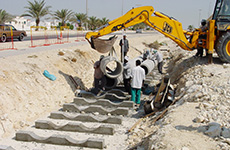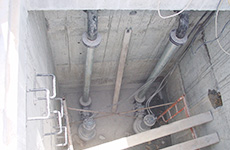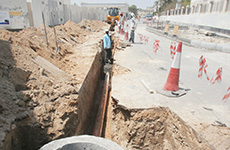


Drainage Works
The civil engineer is responsible for drainage in construction projects. They set out from the plans all the roads, streets, drainage, culverts and sewer involved in construction operations. During the construction process they will set out all the necessary levels for each of the previously mentioned factors.
Drainage options for the construction industry include:
- Point drainage, which intercepts water at gullies (points). Gullies connect to drainage pipes beneath the ground surface and deep excavation is required to facilitate this system. Support for deep trenches is required in the shape of planking, strutting or shoring.
- Channel drainage, which intercepts water along the entire run of the channel. Channel drainage is typically manufactured from concrete, steel, polymer or composites. The interception rate of channel drainage is greater than point drainage and the excavation required is usually much less deep.
The surface opening of channel drainage usually comes in the form of gratings (polymer, plastic, steel or iron) or a single slot (slot drain) that runs along the ground surface (typically manufactured from steel or iron).
We are specialized from applying a fully networks of road till pipes layers for the drainage with fixing manholes on the top layer. Our utilities division is capable of installing sanitary sewer, storm drain, storm water management systems and water mains for commercial, industrial and residential projects. No matter what the weather condition is, our crew delivers quality installation on time and on budget.
